
Children of this age have that endearing quality that shows wonder, curiosity and innocence. Simple props, such as this watering can, add interest and can add to the story of the scene.
This drawing is in profile with the light source coming from the upper right. You can draw it as it appears, without having to plan and sketch the body structure beneath the clothes.
Paper: 12" × 9" (30cm × 23cm) medium-texture drawing paper
Pencils: 2B graphite, 6B graphite
Other Supplies: kneaded eraser,
Optional Supplies: 12" × 9" (30cm × 23cm) fine- or medium-texture sketch paper, lightbox or transfer paper

With a 2B pencil, determine the overall proportions by sketching a vertical line for the front of the body, then adding horizontal lines, one for the top of the head and another for the bottom of the chin. Using that distance as a unit to measure by, the total height is slightly more than three-and-a-half heads, and the body thickness is slightly less than one head. Sketch short lines to place these proportions.
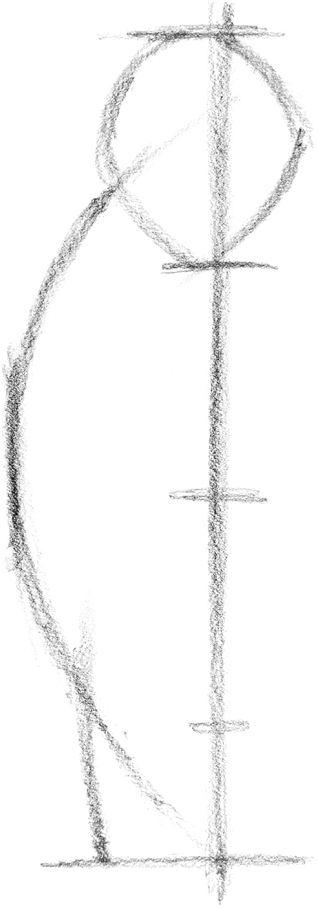
With curved lines rather than an oval, form the head with the vertical line right of center. Add a curved line for the body and another line for the legs.
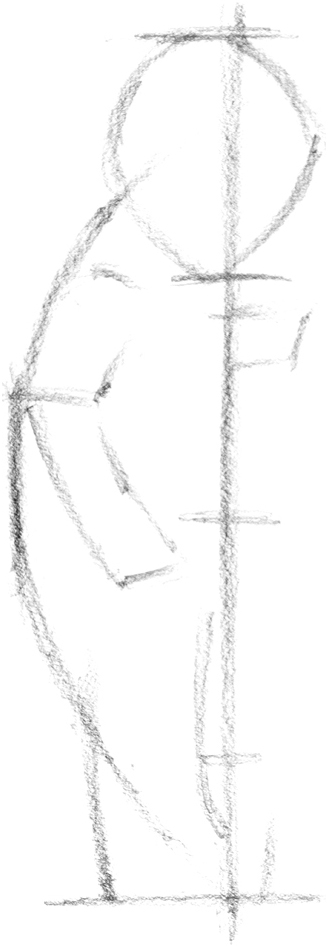
Continuing with a 2B pencil, sketch lines for the general form of the hands and arms with regard to their positions in relation to the other elements. Add lines to distinguish the pant legs and for the front of the shoes.
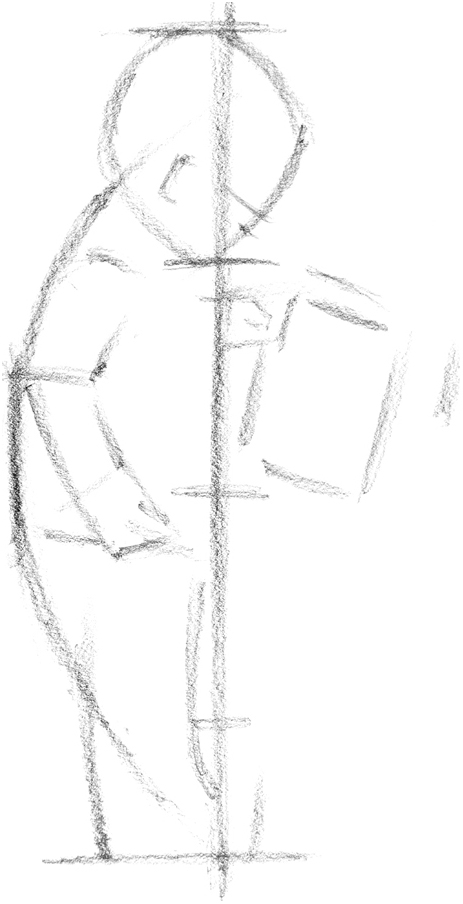
Sketch lines for the placement of the eyes, nose and ear. It’s important to place these lines correctly for the drawing to have the appearance of a two-year-old. Add lines for the prominent fingers, wrist and shirttail. Add lines for the outer proportions of the watering can.

Develop the form of the face, hands, arm, shoes, clothes and watering can. Start adding the most noticeable folds and features such as the pants pocket.

With a 2B pencil, add details including folds, facial features and stripes to the shirt. Erase unwanted lines if working directly on the drawing paper. If working on sketch paper, trace or transfer the image onto drawing paper, leaving out unwanted lines.
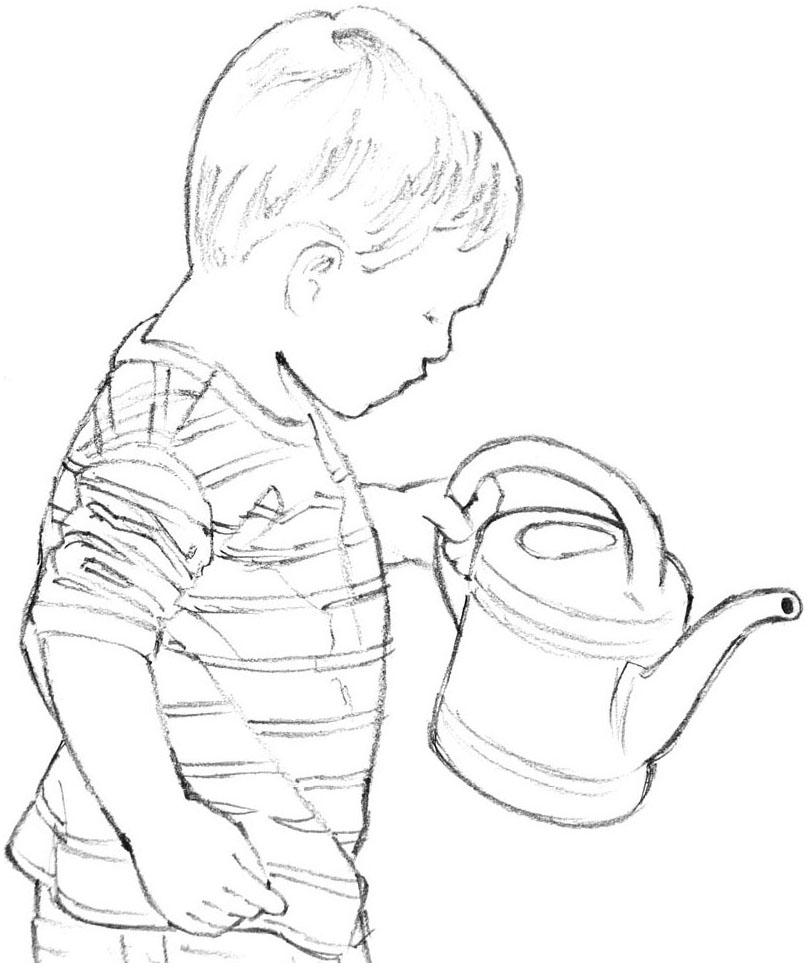
The subtle forms such as the curves of the nose and nose bridge and the point of the upper lip are all part of the profile of the face. Be patient and take your time to develop the details.
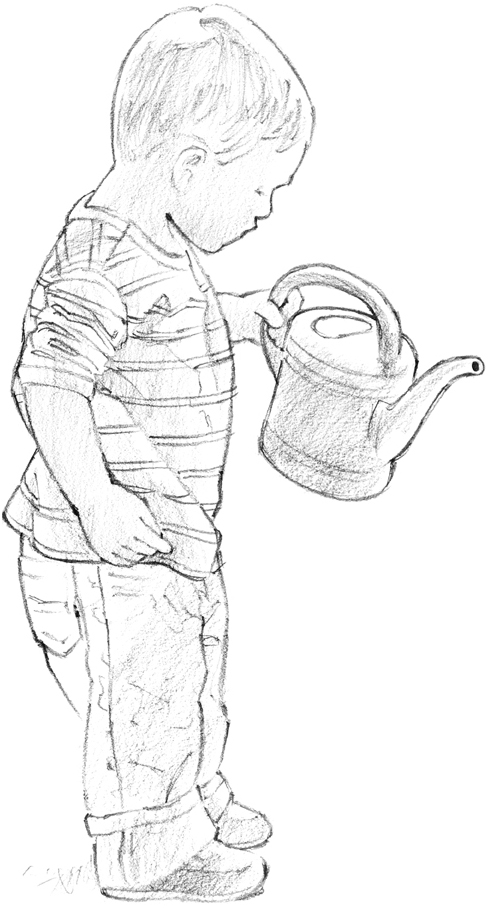
With a 2B pencil, add the light values to the features, keeping some areas white such as around the top of the head and the top parts of the watering can. The shirt will be dark with white stripes. However, you may find it easier to draw the shirt light with dark stripes.

With a 6B pencil, add the darks to areas such as the shirt and pants and the hole in the top of the watering can. Adding the middle values before the dark values may cause the detail and fold lines to become lost.
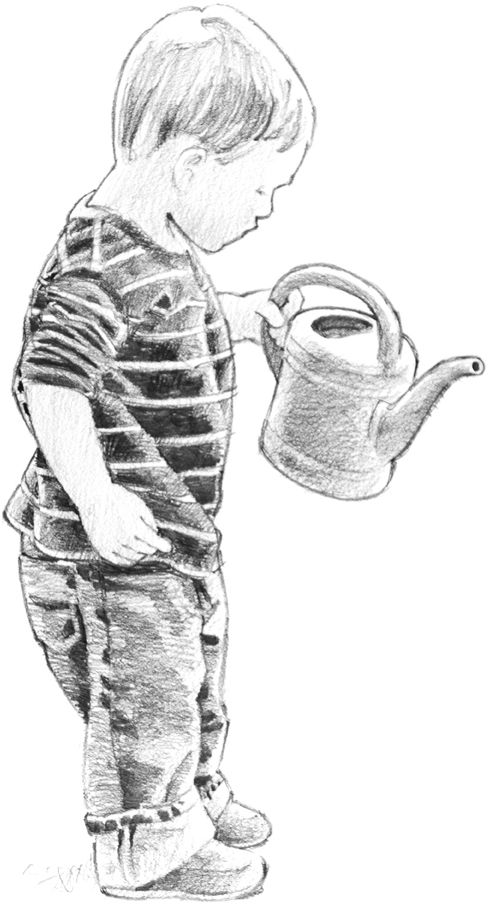
With a 2B pencil, add the middle values throughout the drawing.

The Kid With the Watering Can
Graphite pencil on drawing paper
12" × 9" (30cm × 23cm)
With 2B and 6B pencils, add details throughout, blending the different values so they transition from one to another smoothly. Lighten areas, if needed, with a kneaded eraser. Sign your drawing on the front and write the date on the back.